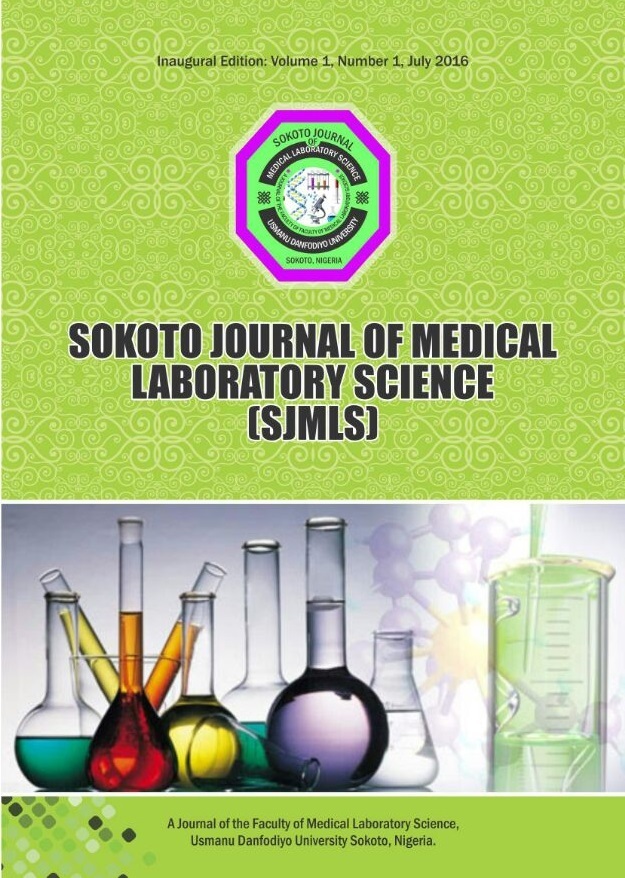Assessment of C-Reactive Protein, Some Trace Metals and Liver Enzymes Among Preeclamptic Women in Ibadan.
DOI:
https://doi.org/10.4314/sokjmls.v9i2.18Keywords:
Preeclampsia, C-Reactive Protein, A l a n i n e A m i n o t r a n s f e r a s e , A s p a r t a t e Aminotransferase, Trace metals, Copper, Zinc, Selenium.Abstract
Preeclampsia is a hypertensive disorder that affects pregnant women and is characterized by the development of high blood pressure and proteinuria after the 20th week of gestation. It is a leading cause of maternal and foetal morbidity and mortality worldwide. The etiology of preeclampsia remains unclear, but it is believed to involve various physiological and biochemical changes, such as oxidative stress, inflammation, and endothelial dysfunction. This research assessed the levels of C-reactive protein (CRP), trace elements (copper, zinc, and selenium), and liver enzymes (ALT and AST) in preeclamptic and normotensive pregnant women attending antenatal clinics at two state hospitals in Ibadan, Nigeria. A case-control study design was utilized with 45 preeclamptic women as cases and 45 normotensive pregnant women as controls. Blood samples were analyzed using immunoturbidimetric assays for CRP, atomic absorption spectroscopy for trace elements, and photometric methods for liver enzymes. Statistical analyses, including t-tests and Pearson's correlation coefficients, were employed to interpret the data. The results showed significantly higher levels of CRP (34±9 vs 2.7±0.9 mg/l), ALT (76±5 vs 22±6 IU/L) and AST (53±14 vs 23±5.0 IU/L) in the preeclamptic group compared to controls (p<0.00001). Copper levels were significantly lower (725±99 vs 739±91 ìg/L, p=0.006) while selenium levels were also lower (74±8.0 vs 78±8.0 ìg/L, p=0.01) in preeclamptic women. However, zinc levels did not differ significantly between the two groups. The study found positive correlations between CRP and the liver enzymes ALT (r=0.97) and AST (r=0.87), as well as between the trace elements. Higher CRP, ALT and AST levels with lower copper and selenium were associated with preeclampsia, indicating potential roles of inflammation, oxidative stress and liver dysfunction in the pathogenesis of this disease. Overall, the findings suggest that CRP, trace metals and liver enzymes could serve as biomarkers for monitoring preeclampsia.




